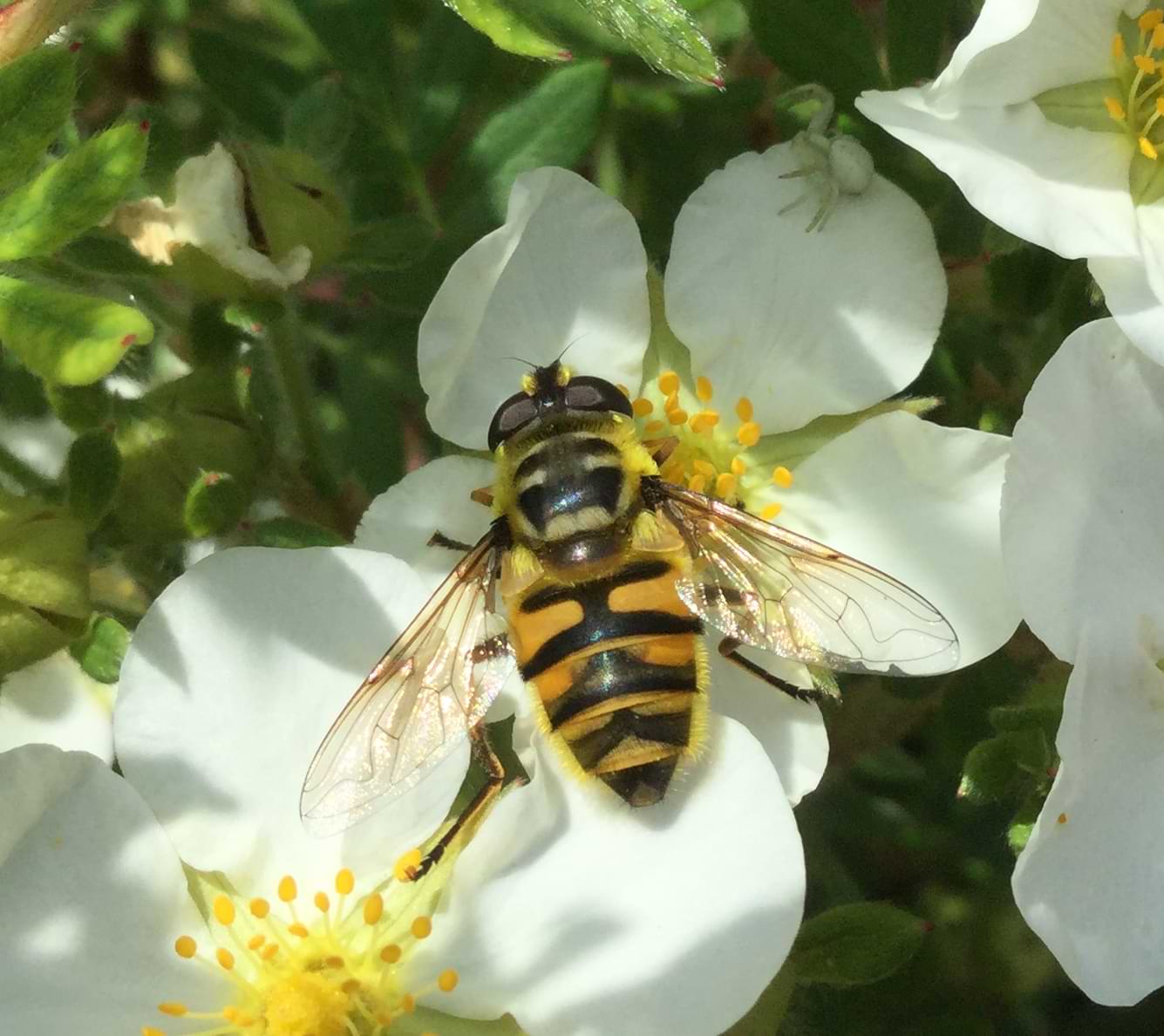Hot Fly Summer
[ CW: spiders ]
Flies are my favourite kind of insect so I end up photographing them a lot. There's been a loads of them this summer so this is probably the most amount of images I've ever put onto one page. Enjoy!
Back at the beginning of summer I showed a picture of a bumblebee mimic fly but you couldn't quite see its head, so here's another fly from the front. They seem to be cleaning themself in this photo.
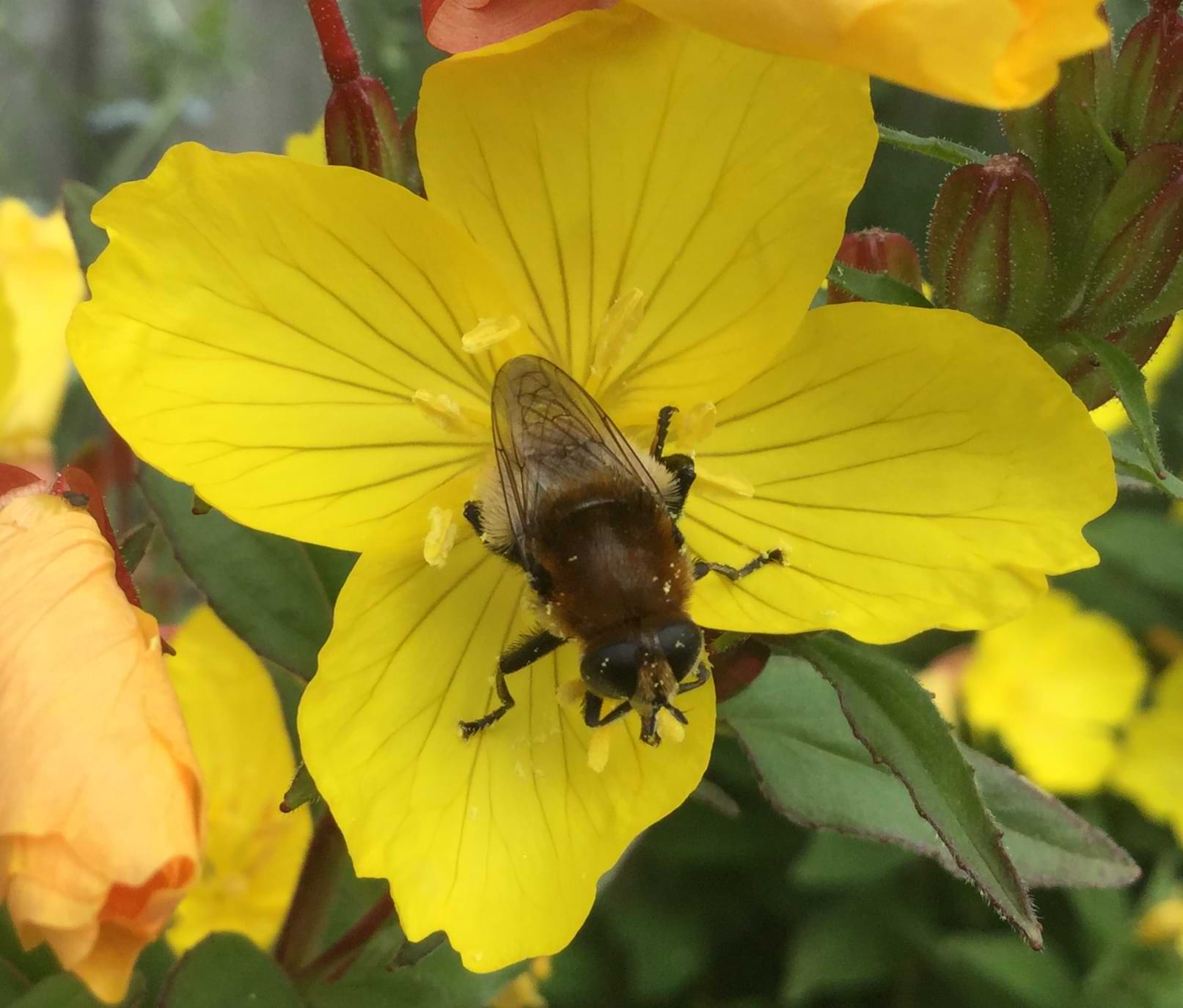
This seems to be a Large Marsh Horsefly (Tabanus autumnalis), which as the name suggests was very large! I can see now why bites from these guys cause way more painful swelling than mosquito bites do, though it should be said that horseflies very rarely attempt to feed on humans and males such as this one don't even have the necessary mouthparts to bite, instead feeding on nectar.
You can differentiate male and female horseflies by observing whether their eyes join up in the middle, females have separated eyes whereas the male's eyes fuse together giving him a cycloptic look. This guy's head is completely and entirely eye.
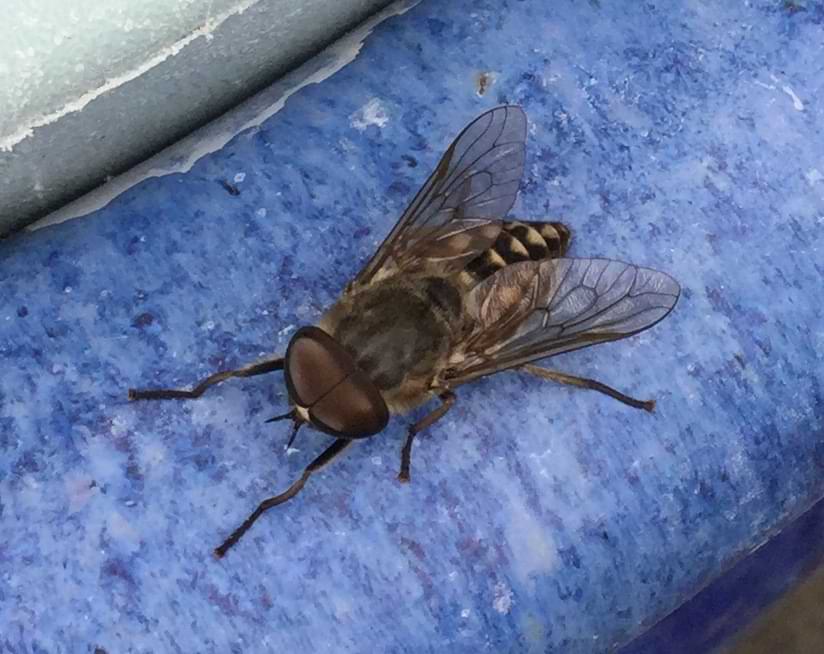
A cute limonid crane fly! I thought this was a mosquito at first glance; it wasn't until I took a closer look at the photos that the crane fly's distinctive weird snout became clear. I love crane flies, they're such a silly looking bug.

This next one is a kind of flesh fly but I've just been referring to her as "the skuzz fly". Seriously this is the most skuzzy-looking fly I've ever seen: the bright-red eyes, the torn wings, the weird little toes she has. Beautiful.
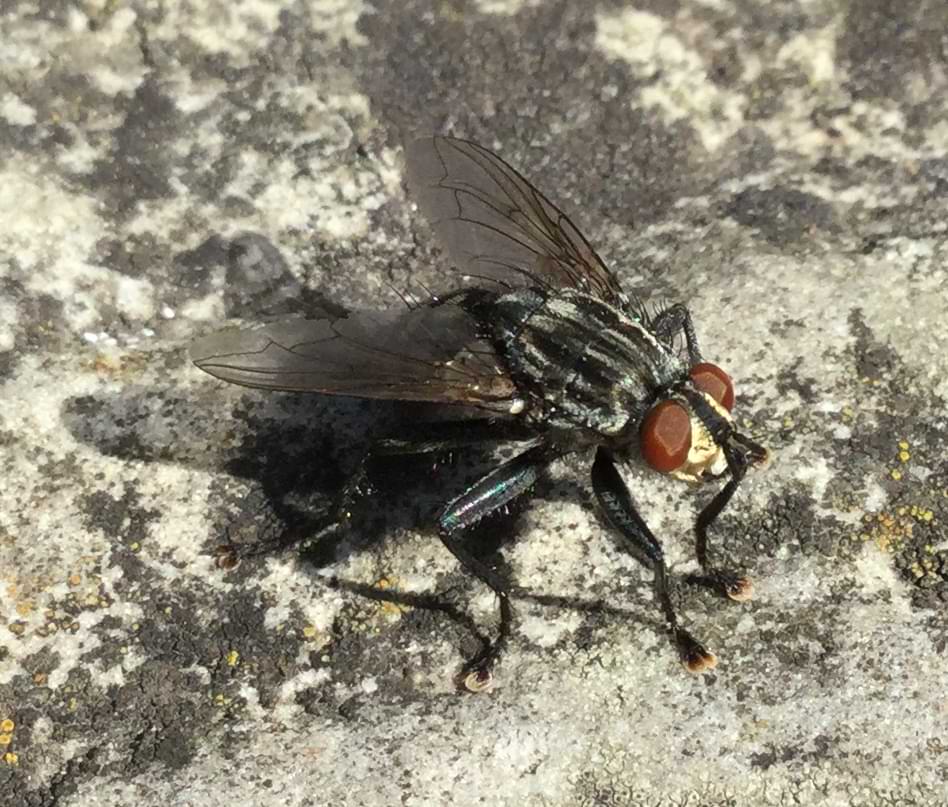
This second picture is of another fly I took on a different day, but it appears to be the same species. Look at this wretched creature covered head to abdomen in pollen. I love her so much.
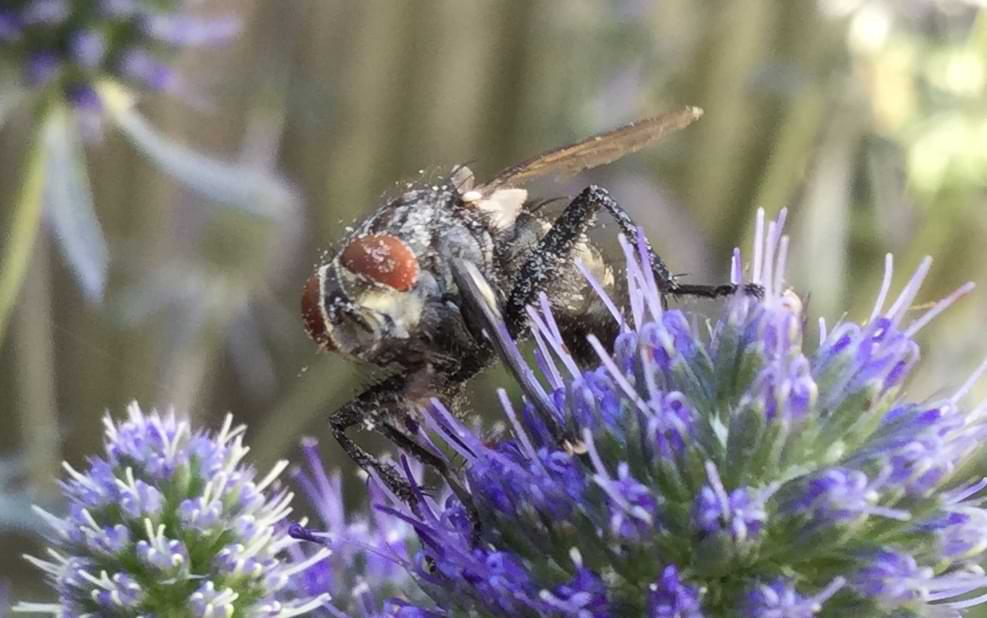
This one is a complete mystery to me. I'm not even one hundred percent sure it is a fly, but it does look cool! Particularly the wings which look surprisingly thick, they're like those sun visors you stick on car windows.
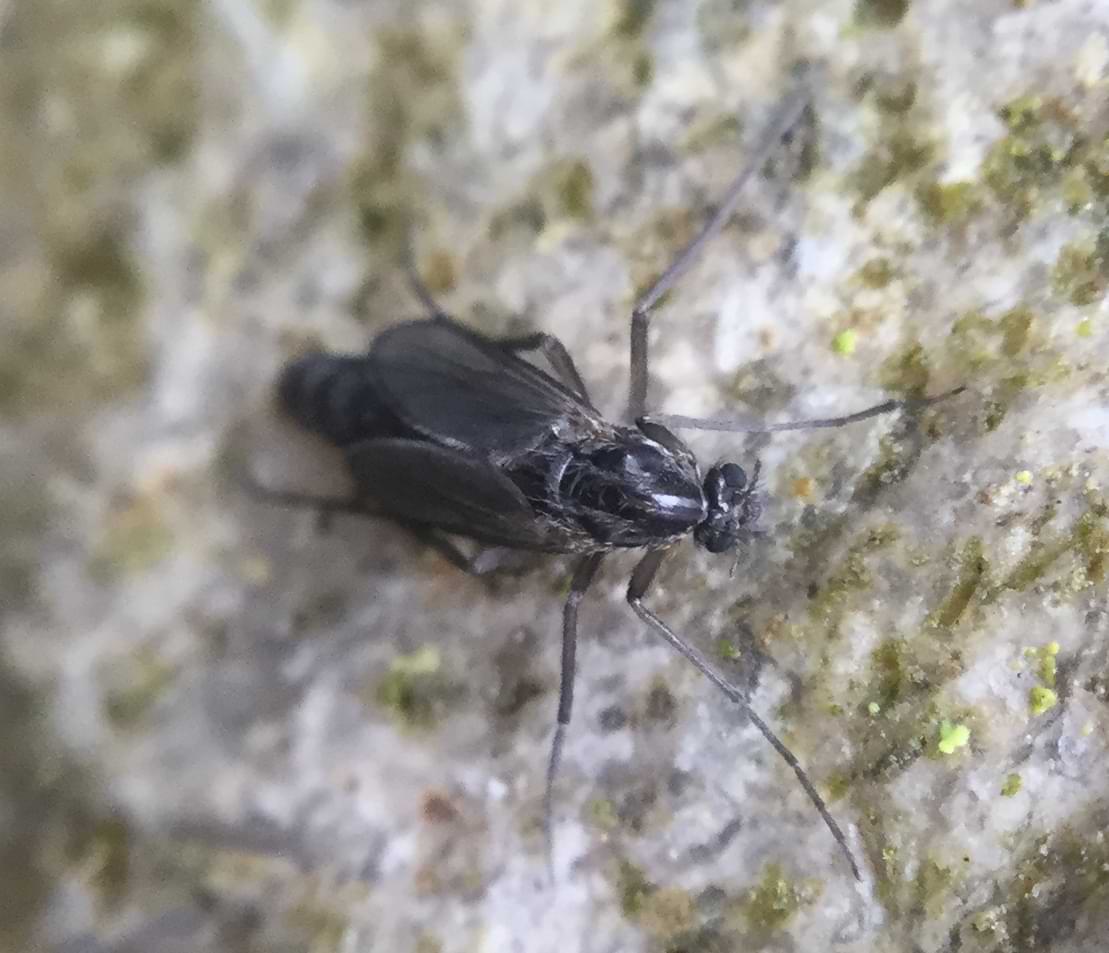
Of all the flies, hoverflies are my favourite due to their bright colours and the intricate way they move during flight. They're also the type of fly I saw the most of during the summer so the rest of this page is going to be all hoverflies. Here's all the hoverflies!
A Migrant Hoverfly aka Eupeodes corollae! She was very tiny, the flower she's resting on here is a buttercup. Fun hoverfly fact: the yellow crescent shapes on her abdomen are called lunules.
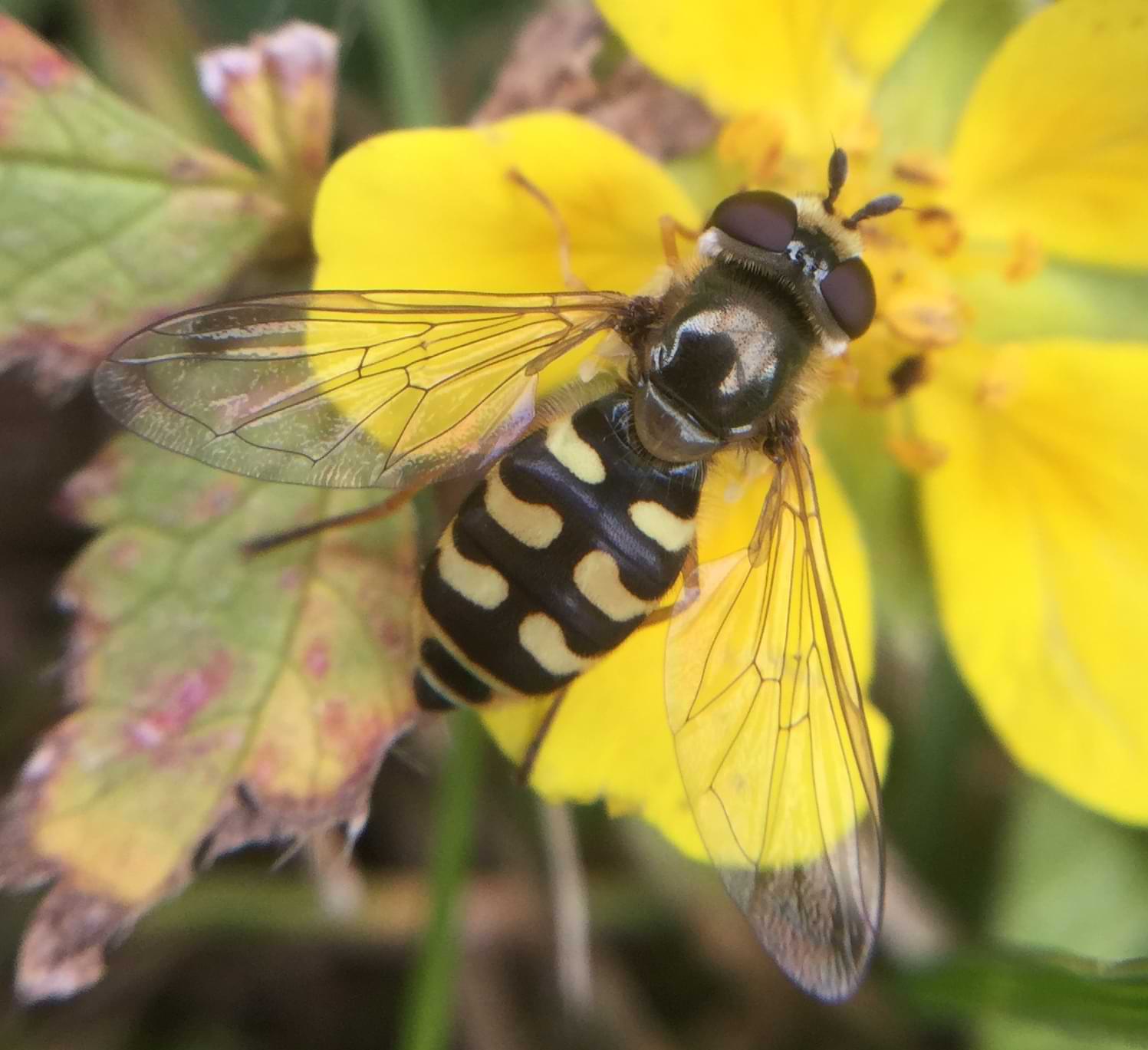
I think this is Xylota segnis which has the delightful common name of the Brown-toed Forest Fly. They're very common throughout summer and can often be seen resting on big flat leaves. It's not really visible in my photos, but their abdomen has a large orange patch running across it that looks like amber.

Here we have the aptly named Long Hoverfly. I sadly didn't see too many of these so this half-shaded picture is the best I got, but it's still cool to see their weirdly elongated abdomen.

This next hoverfly is probably the coolest looking bug I've seen all summer. This thing is extremely stylish, look at the black tint on their wings!!
Despite how unique this hoverfly looks it's hard to precisely identify them due to their genus branching out into a few very similar looking species. To make matters worse, said genus was renamed in 2018 which has made researching them quite confusing. From the best I can tell this hoverfly is Philhelius pedissequus, previously known as either Xanthogramma pedissequum sensu stricto or Xanthogramma pedissequum sensu lato... I think.
Someone really needs to coin common names for these guys, they're too cool for them to be this confusing to talk about.
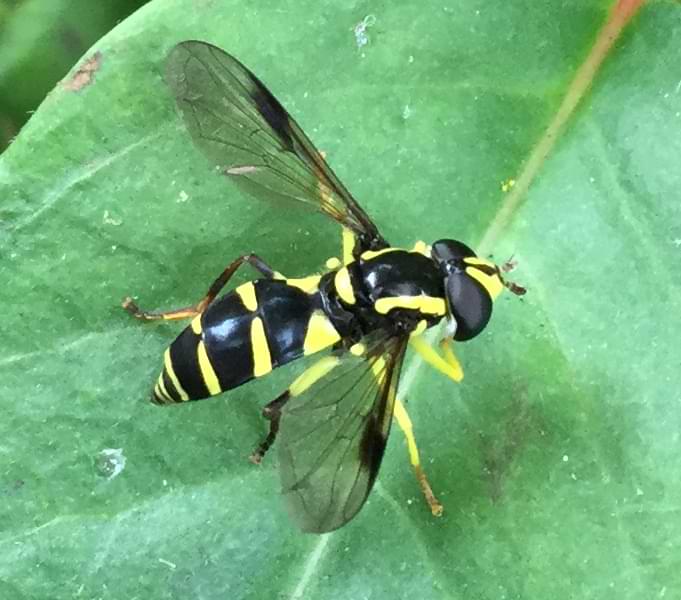
And finally this very large hoverfly. I can't work out what genus they belong to, but based on the size and colouration they seem to be some kind of wasp mimic. Very pretty.
I didn't notice it at the time, but there's a cute flower crab spider hanging out on the right; they normally ambush insects that are drinking nectar, but the resemblance to a wasp and sheer size of this hoverfly probably deterred her from even attempting to get a meal here.
